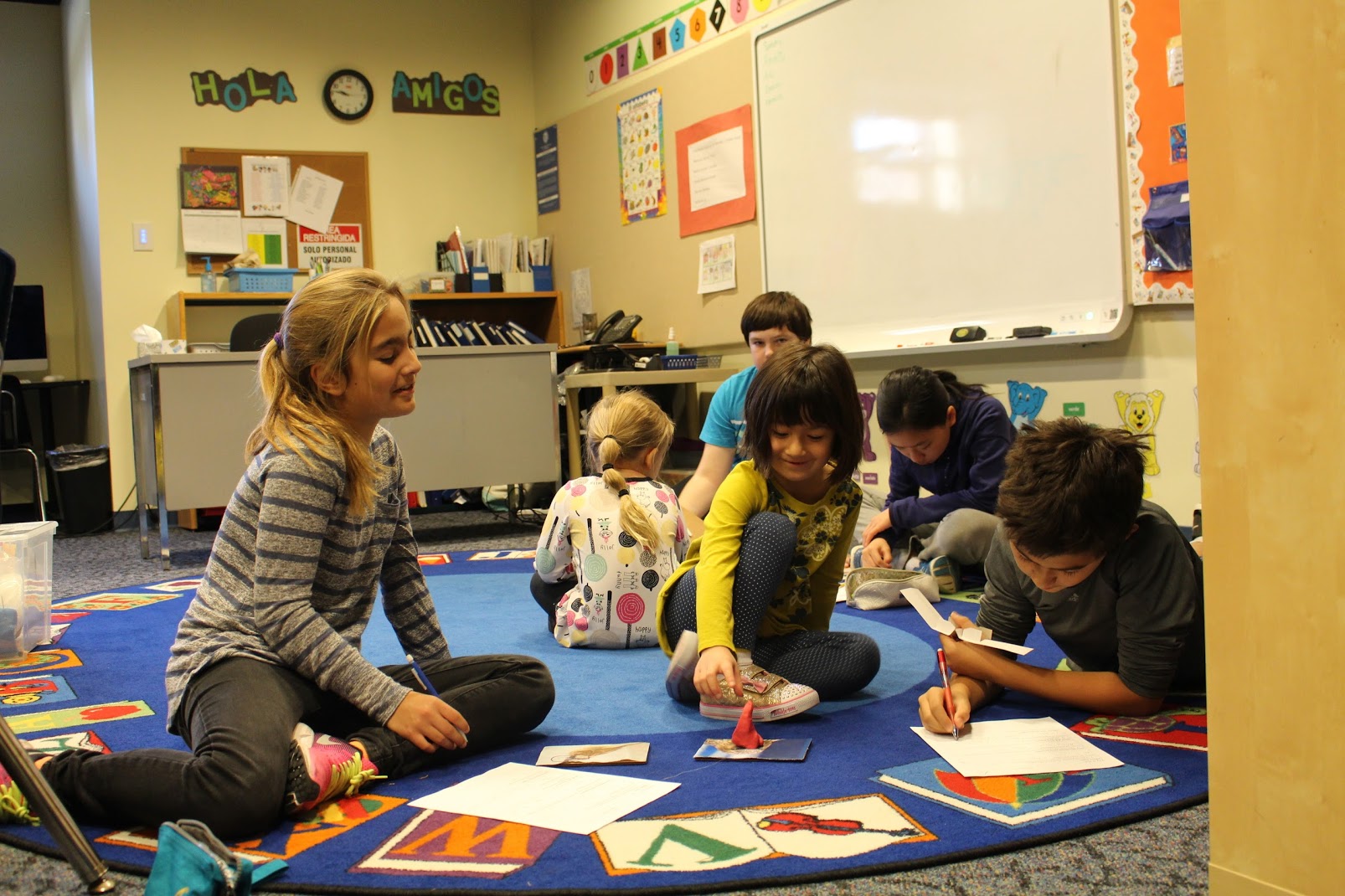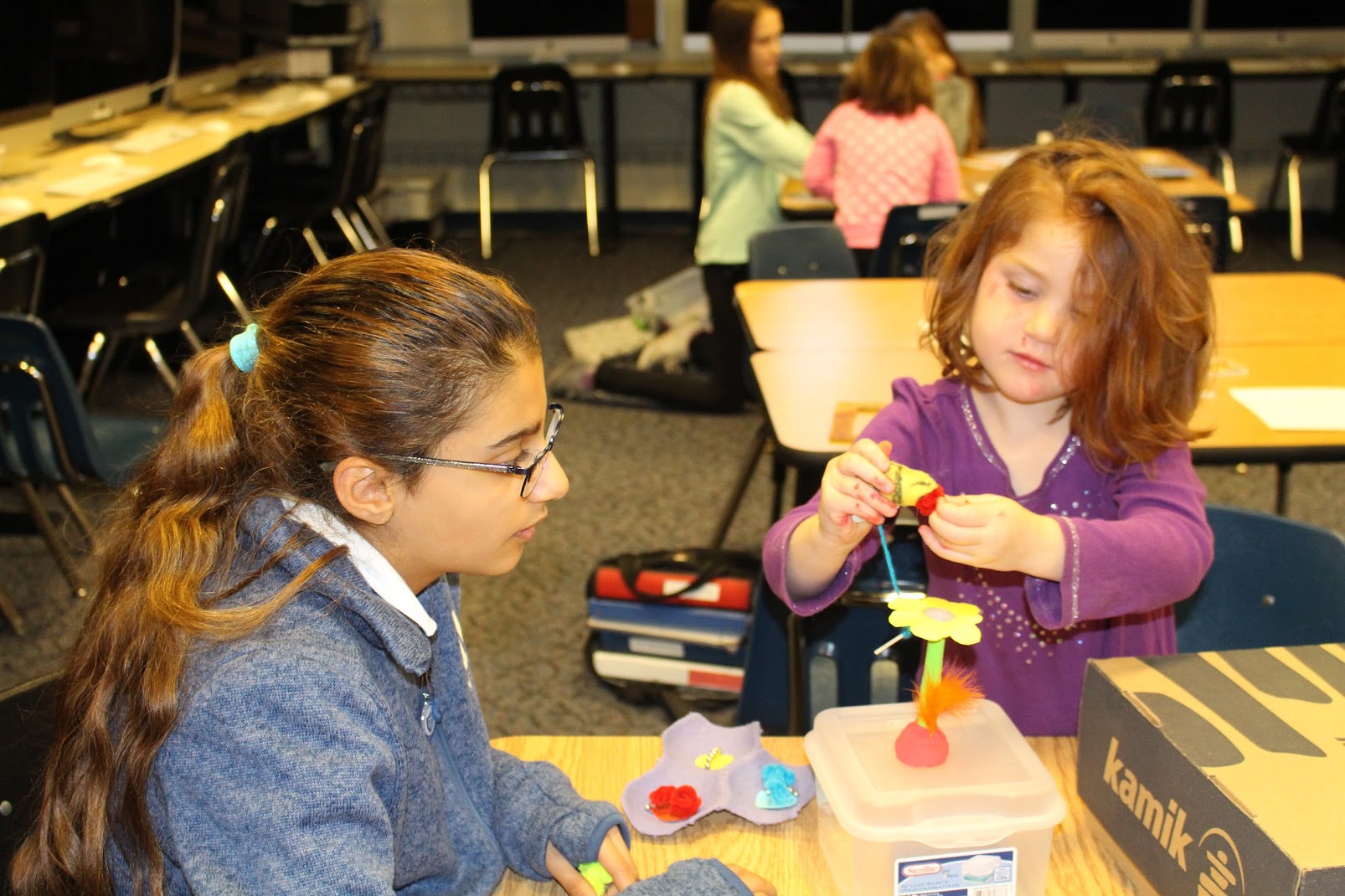sixth graders learn design thinking through their science projects
Our Design Thinking process for students, with empathy at the heart.
Sixth Grade Life Science Classes start the year with a design thinking project to create something that will help teach the Junior Kindergarteners about the animals on our campus.
It begins with an in depth study of the animals, while at the same time getting to know their Junior Kindergarten buddies through assemblies and special gatherings called "buddy time". In October the project progresses to working in partners to definine needs, and imagining fun educational toys for our youngest people. Shortly thereafter classes move into the eurekaLab for a month or more of prototyping and trying these ideas with the younger students. The Junior Kindergarten classroom happens to be right next door to the eurekaLab while we're in our temporary home during the year of construction. This proximity provides an easy way to try out lots of prototypes.
The pond on Meadowbrook's campus - November 1, 2016
We've refined many parts of the Design Thinking process this year for our students. In the EurekaLab we created some mini-lessons for the students and interspersed them into the schedule as needed:
- orientation to where things are in the lab & storage of projects
- rules for using hot glue guns
- introduction to all the various cutting tools available and how to use them safely
- makedo for quick cardboard connections
- gravit.io website - our new favorite tool for designing files to lasercut and vinyl cut and how to send a job to the queue for the lasercutter
Also, every sixth grade student recently got the opportunity to make an account on the NVBOTS, our 3D printer with a web interface for queueing print jobs.
With these basic tools under their belt, the students learned that getting feedback quickly is an important facet of prototyping. Their first prototypes took only a day or two and were often paper and pencil based; just something to quickly communicate their ideas. They first met with teachers who teach Junior K to get their input on the early prototypes. With that feedback they revised their ideas and started building something to test a critical design question. Each prototype tests another facet of their project.
To help the students stay on track, be in collaboration with their partner, and keep the scope manageable, Science teacher Rachel Shuler, came up with a 1/2 page start-of-class planning sheet. It asks three questions each day:
- For your current prototype, what is your critical design question? (CDQ)
- What is your user's accurate takeaway? (Which means...what are you trying to teach the Junior Kindergartener about your animal with your prototype?)
- What is the first thing you will do today in the lab?
At the bottom of the page, there's a fourth question that they answer when they stop work at the end of the period: What is the first thing you will do tomorrow in the lab? This question has helped them stop what they're working on when time runs out. By asking that question at that moment, they are better managing the overwhelming need to rush and finish something after clean up time has begun. On the back of the daily 1/2 page is a formative reflection rubric that asks them to grade themselves at the end of the period. How did they do that day with engagement, collaboration, safety, and clean up? It's been a fabulous tool for keeping the projects manageable, having a chance to take the temperature of class each day, and making sure everyone on the teaching team understands the students progress and challenges.
Below are a collection of photos sampling what the sixth grade has been prototyping and trying so far this year with the Junior K. Many are teaching about birds but some are doing insects and mammals, too.















